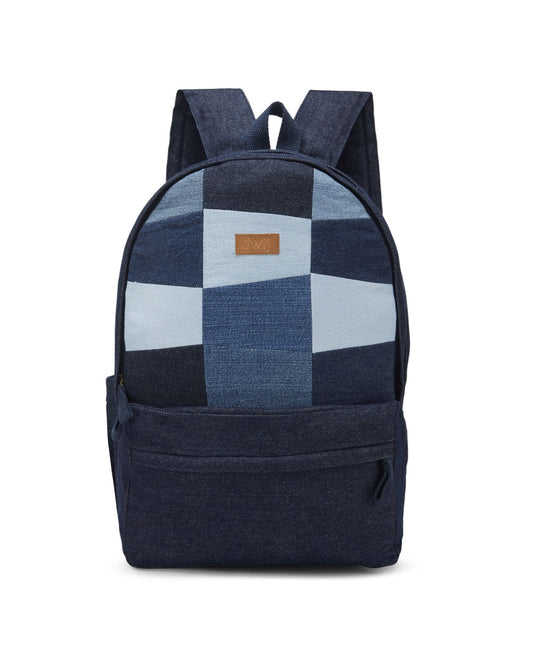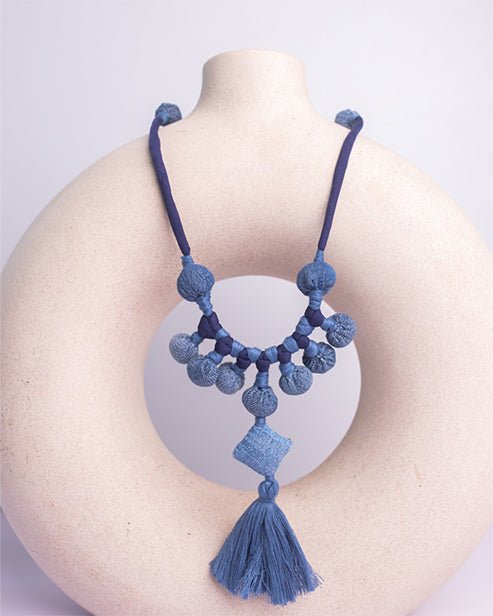If there’s one thing the young, conscious generation born in the noughties is aware of is that no other human being needs to be exploited for the clothes they wear or the shoes they walk in. Whether it’s a trend or a catching fad, it's an awareness that will definitely make ours a better place to live in.
Sustainable fashion a.k.a eco-fashion, is a social movement gaining traction in the world of fashion, all across the globe. It broadly translates into ecological integrity and social justice, which means fashion products that are designed, manufactured, distributed and used in ways that are as environmentally friendly as possible and the artisans/workers are not exploited in the process.
Since environmentalism and socially equitable practises go hand in hand, ethical and sustainable fashion are therefore intricately intertwined. Ethical fashion, a related term refers to clothing made in ways that value social welfare and worker rights.

Unfortunately, this is not true of today’s dominant tide of ‘fast fashion,’ which refers to clothing lines that produce high volumes of clothes throughout the year, intentionally designed to be consumed quickly at low, attractive prices. Since these clothes are produced at a fraction of the price they used to pay earlier, consumers can update their wardrobes very quickly without losing an arm or a leg. Shoppers end up perceiving clothes as being disposable, using them just a few times before discarding them or moving on to newer and trendier clothes, resulting in an overwhelming amount of waste.
This current trend of fast fashion is a far cry from sustainable fashion as it depletes earth’s natural resources, exploits the workforce involved and creates an incredible amount of waste for landfills.
It’s becoming clear that frequent consumption of anything, especially overly trendy, seasonal, or fleeting fashion is environmentally damaging, unnecessary, and irresponsible.
However, having said that, all is not yet lost; fashion can be made more sustainable by using organic materials, using biodegradable dyes, manufacturing processes that create zero waste, amongst many others.
While there can be a multitude of factors to consider before starting to make choices on how to practise sustainable fashion; we recommend, a good starting point would be to think about which social or environmental concerns you feel most passionately about and then to first prioritise getting those right.
How To Practice Sustainable Fashion: Minimalism Lifestyle Tips
Here, we must understand that being stylish/fashionable and being sustainable at the same time, aren’t as incompatible as one might imagine.
1. Limit The Expansion Of Your Closet
While it might be an uncomfortable nudge to compulsive consumerists, it's time we acknowledged the statistics that indicate we only wear 20% of what we have in our wardrobe on a regulate basis and the remaining 80% generally comprises clothes and accessories we bought for a specific occasion but never saw the light of day again. Oftentimes we end up purchasing things we think we might need for a future specific occasion, or we keep for some sentimental reason, or even envisage ourselves wearing in future when we are the desired size or weight (this is called aspirational shopping). Or perhaps things we thought we had loved, but don't look so good once bought. We should at this juncture, say goodbye to all those clothes that we haven't used for two consecutive seasons, because chances are they never will be. While clearing out is great but living minimally means we also have to be conscious of the fact that we need to stop buying more, mindlessly.

2. Define Your Style
It might be easier said than practised but we think it's a great starting point. If we were to think hard and define our basic style and a colour palette we are most likely to wear, it would really limit our consumerist extravagance. Additionally, the advantage of buying within a complementary colour palette is it’s easy to mix and match. We can always add a dash of colour or an accent to our look with accessories rather than buying numerous trendy and niche clothes. The same principle can also be followed when trying to edit our wardrobe.
3. Resist Impulse Buys
Many people end up with bursting, unkempt closets because they buy things they think they might wear or need at a later date, say when they are two sizes smaller or something they saw someone wearing and while it looked great on that other person, doesn't look half as nice on them. We need to become mindful of what we are purchasing with the prudent reason behind the purchase staring us right in the face. If that reason evades us, we must not end up wasting our money.

4. Recycle Or Reuse Deadstock Materials
Using pre-existing products to create new clothing is always a great choice because it does not require extraction of new resources, but rather makes the most use of materials that may otherwise go to waste. Look for fabrics made of recycled fibres (e.g., recycled nylon, recycled polyester, recycled cotton), clothes/ products made of up-cycled materials (repurposed fabric), or clothes made from deadstock fabric (materials created, never sold nor used and would otherwise be thrown away).
5. Buying Second Hand And/Or Durable Clothes
Instead of opting for fast fashion that is cheap and meant to be replaced swiftly, we can be more sustainable fashion consumers by also responsibly caring for our clothes, committed to prolonging their lives or buying second hand/thrifted clothes- something that will keep clothes out of landfills for longer. Buying superior quality, more durable apparel and shoes that we can imagine ourselves wearing again and again throughout the coming years (even if they are a little more pricey) helps as well, as it means that it may survive in our wardrobe longer. Last but not the least, taking good care of our clothes can have a huge positive impact on the environment - we will need fewer clothes and thus resources required to produce more clothes will be more judiciously used; less waste means fewer tonnes ending up being burnt to eventually reach landfills. Accumulation is clearly not a prerequisite for being a smart dresser. We all have it in us to become minimalist fashion ambassadors if we wish to; and by encouraging brands to change their ways and be accountable to the social and environmental impacts of fast fashion - we can make a significant dent in our own fashion/lifestyle footprint.
Minimalist Tips for decluttering
-
Let your wardrobe not grow too much. Let it be green
-
Only buy what is your style today and will be in the future
-
Let impulse in the shopping arena not get the better of you
-
Purchase recycled, up-cycled, deadstock materials
-
Buy thrifted, second hand clothing
-
Try prolonging the life of your clothes by taking care of them well, mending when needed, and making alterations to modernize their looks to match your current tastes.
Read about our founder's minimalist life here.





